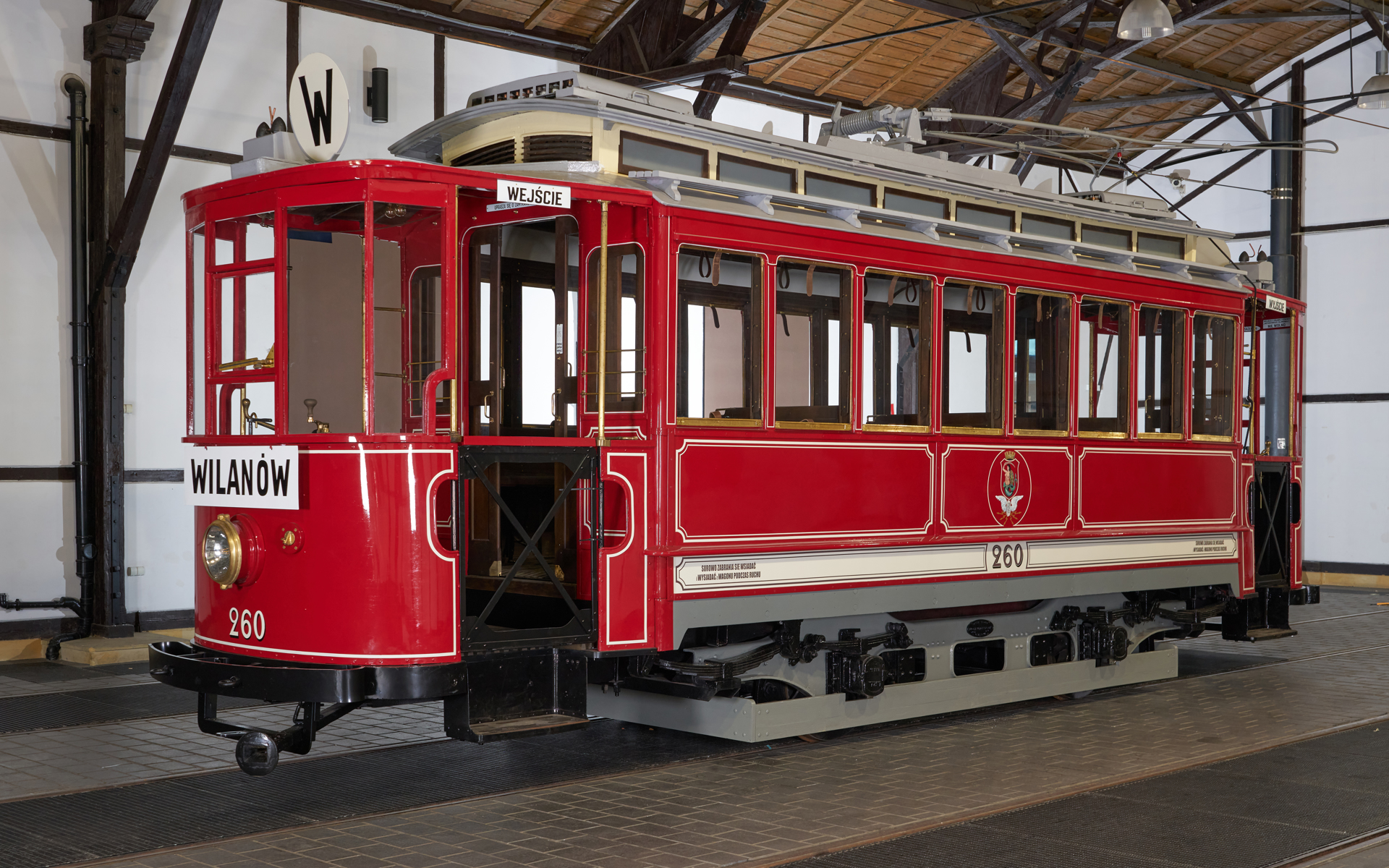
C-Type motor-driven tram car, no. 260
Lilpop, Rau i Loewenstein,Creator
Lilpop, Rau i Loewenstein
Time and place of creation
No data
It is fair to say that immediately after World War I, as a result of the looting and devastation policies of the occupying countries (Germany and Russia), Warsaw’s public transit was in dire condition. Tram lines were continuously being extended, which led to the urgent need for new rolling stock.
Meanwhile, in 1915 the tsarist Russian government transported the property of the Warsaw company Lilpop, Rau and Loewenstein (328 cars worth 1,475,000 roubles) eastwards, to the Kharkov area. After the October Revolution the factory was nationalised, and it was only in 1921, under the provisions of the Riga Treaty, that some of the machines and equipment could be restored to the Warsaw enterprise that was then struggling to rebuild itself.
The paths of Warsaw’s public transit and the Lilpop, Rau i Loewenstein company crossed in 1925 when Warsaw’s Municipal Trams enterprise placed an order for the construction of 30 motor-driven tram cars. The C-type tram was the first such car designed and built completely by a Polish company, except that imported motors and electrical equipment were installed in them. Their design was based on that of the A and B-type cars made in Germany that were delivered to Warsaw in 1906-1907 and in 1914.
Except for the metal window frames, the C-Type car body is entirely made of wood. Its roof has a lantern design with a skylight in the middle. Electricity was received through a boom collector, which was switched over by hand when the direction of travel was changed. A front covering for the platforms was applied for the first time, by enclosing them in a wooden structure with windows. The platforms were made broader than in previous models and the partitioning walls were equipped with two-leaf sliding doors, with a mechanism allowing both leaves to be moved aside at the same time. The car was equipped with electrodynamic brakes and a manual Clay system parking brake, actuated with a crank from the driver‘s cab. Sand containers were placed under the floor of the passenger compartment, in the corners under the axes. The passenger compartment was lit with five lights, each fitted with two lightbulbs. Three lights were located on the compartment ceiling, the others were placed on either side of the entry platform. The chassis was made of 13 mm pressed steel sheet, with a wheelbase of 2500 mm. The car accommodated sixty passengers, who could avail themselves of one of the 24 seats or 30 standing positions.
C-type tram cars were operated on Warsaw’s tram lines until 1956. Two cars of this type remain to this day, one of which (number 260) is found in the Museum of Urban Engineering in Krakow, where it will undergo a thorough restoration in 2020-2021 thanks to funds obtained by the Museum.
C-Type motor-driven tram car, no. 260
Lilpop, Rau i Loewenstein,Creator
Lilpop, Rau i Loewenstein
Time and place of creation
No data











